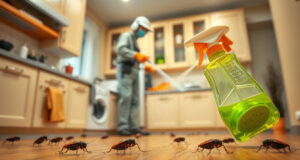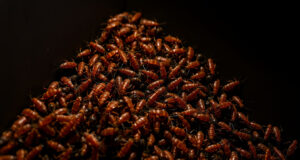
When managing pest populations, residual insecticides serve as a key tool. They kill pests and keep new ones away. This guide explains what residual insecticides are, how they work, their benefits, and safe ways to apply them.
What Are Residual Insecticides?
Residual insecticides are chemicals that stay active on surfaces for weeks or even months. They work by staying on walls, furniture, or outdoor areas. When pests walk on these surfaces, they pick up the chemical. The insecticide then hurts them or stops them from living.
How Do Residual Insecticides Work?
The chemical sticks tightly to surfaces. Insects that touch these areas get a dose on their bodies. Some of these chemicals disturb nerve signals, which stops the pests from moving properly. Other types slow down growth so that pests cannot reach maturity. Some keep pests away from the area. Each method helps you choose the best product for a pest problem.
The Benefits of Using Residual Insecticides
1. Long-lasting Protection
Residual insecticides work for many weeks. They reduce the need for repeated treatments. This saves both time and money.
2. A Wide Range of Use
These insecticides work inside and outside. They suit homes, shops, and farms.
3. Targeted Control
You can apply them where pests are common. This cuts down on the impact on other creatures and uses less chemical overall.
4. Cost-Effective
Since they last long, you do not treat as often. Fewer treatments mean lower costs.
Best Practices for Applying Residual Insecticides
1. Read the Label
Begin by reading the label. The label shows the right dose, safety steps, and the pests to treat.
2. Apply at the Best Time
Timing matters when you apply the insecticide. Indoors, try to treat when pests are not active. Outdoors, choose dry days so the chemical can stick to surfaces.
3. Focus on Key Areas
Apply the chemical in areas where pests meet. Look at doorways, cracks, and small hiding spots.
4. Routine Checks
Inspect treated areas often. This helps you see if the treatment still works and if you need to treat again.
5. Safety Steps
Wear proper safety gear when you handle insecticides. Ensure good air flow indoors when you use them.
Conclusion
Residual insecticides work well for long-lasting pest control. They help protect your space over time and cut down on frequent chemical use. Homeowners, business owners, or pest experts can all benefit by using this tool to keep pests away.
Start using residual insecticides today to build a lasting shield against pest problems.




